In the heart of the Himalayas, a world of elegance and tradition unfolds. It is a world where softness meets strength, where intricate craftsmanship weaves stories. Besides, it is a place where women have risen as pillars of empowerment. This is the world of Pashmina, the art that transcends time and borders. Pashmina is the art of converting exquisitely soft Cashmere wool to luxury end products. And Cashmere, as we all know, is the fabric of superlative softness, that has earned the monikers "soft gold" and "diamond fabric."
So, we embark on this virtual journey and find ourselves drawn to the source of Pashmina. We look for the regions where the artisans transform fine Cashmere wool into shawls, scarves, and stoles that grace the shoulders of individuals worldwide. This blog is an expedition into the cradle of Pashmina production. Also, it's a quest to uncover the cultural tapestries and the enduring craftsmanship that shape this iconic fabric.
The Momentousness of Pashmina
Pashmina isn't just an exquisite art form. Rather, it is a cultural treasure that has woven itself into the traditions, ceremonies, and daily lives of the regions it hails from. Its remarkable softness, warmth, and lightness make it a coveted possession. Additionally, its intricate patterns reflect the rich tapestry of the Himalayan culture.
The purpose of this blog is to delve deep into the regions where Pashmina comes from. Moreover, we will try to discover the hands and hearts behind its creation and explore the cultural significance and economic empowerment it brings to communities. This journey is a tribute to the women artisans who have preserved this art form, a celebration of their resilience, in addition to being an acknowledgement of Pashmina's role as a symbol of feminine empowerment.
Our path will take us to the heart of production, with each region offering a unique chapter in the story of this remarkable fabric. We will hence traverse the valleys and plateaus, where high-altitude goats yield the finest wool. We will also meet the skilled hands that meticulously spin, weave, and embroider shawls. Further, we will explore the traditions, challenges, and triumphs that have defined the pashmina industry, and we will celebrate the cultural significance of this fabric in the regions it touches.
Pashmina: The Art of Elegance and Tradition
Pashmina, often celebrated as the "diamond fabric" or "soft gold," is a textile of extraordinary beauty and significance. Hence, to embark on our journey to explore the regions of its origin, it's crucial to understand the essence of Pashmina – an art form that transcends time and borders.
What is Pashmina?
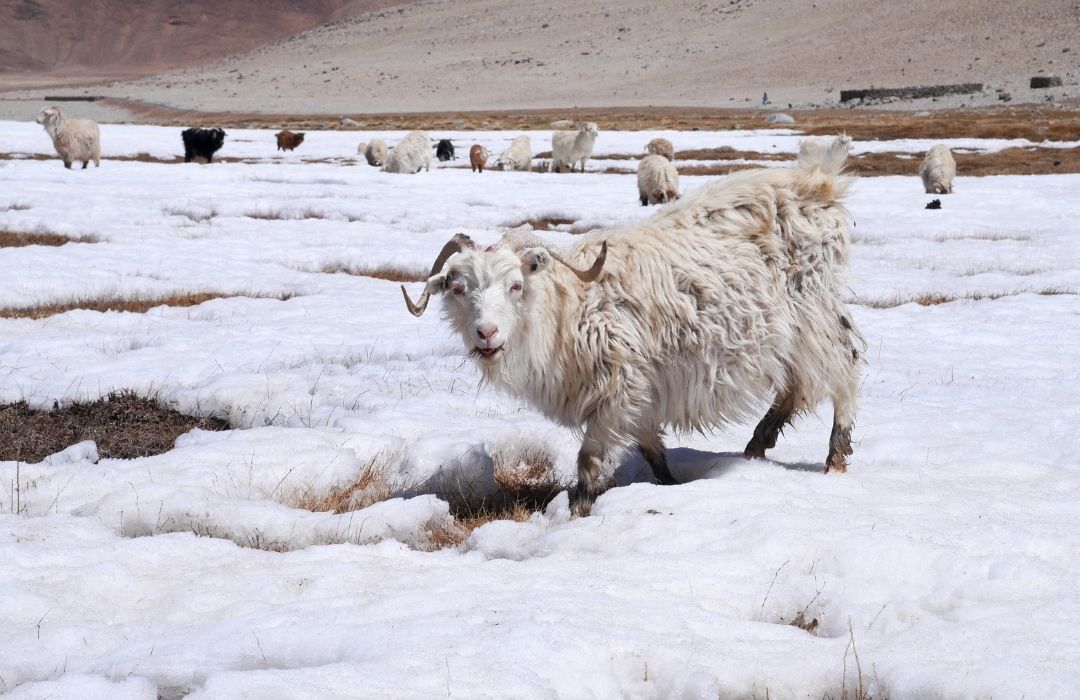
Pashmina is the regal art of converting Cashmere wool to luxury shawls, scarves, apparel and accessories. Cashmere is a fine woollen textile that comes from the underbelly hair of the Capra Hircus goat, found primarily in the Himalayan region. The term "Pashmina" itself comes from the Persian word "pashm," meaning wool. This exceptional wool is famous for its unique characteristics that set it apart from other textiles:
- Exceptional Softness: Cashmere is popular for its unparalleled softness, often described as "buttery" or "cloud-like." It delicately caresses the skin, thus making Pashmina shawls and scarves highly sought after for their comfort.
- Lightness: Despite its incredible warmth, Pashmina products are astonishingly light. This quality makes these an ideal choice for clothing, as they can provide insulation without weighing the wearer down.
- Incredible Warmth: Pashmina's fine fibres trap air, creating an insulating effect that keeps the body warm, making it especially cherished in regions with cold climates.
- Elegance: Pashmina's elegant drape and subtle sheen make it a versatile accessory, suitable for both casual and formal occasions.
Cultural and Historical Significance
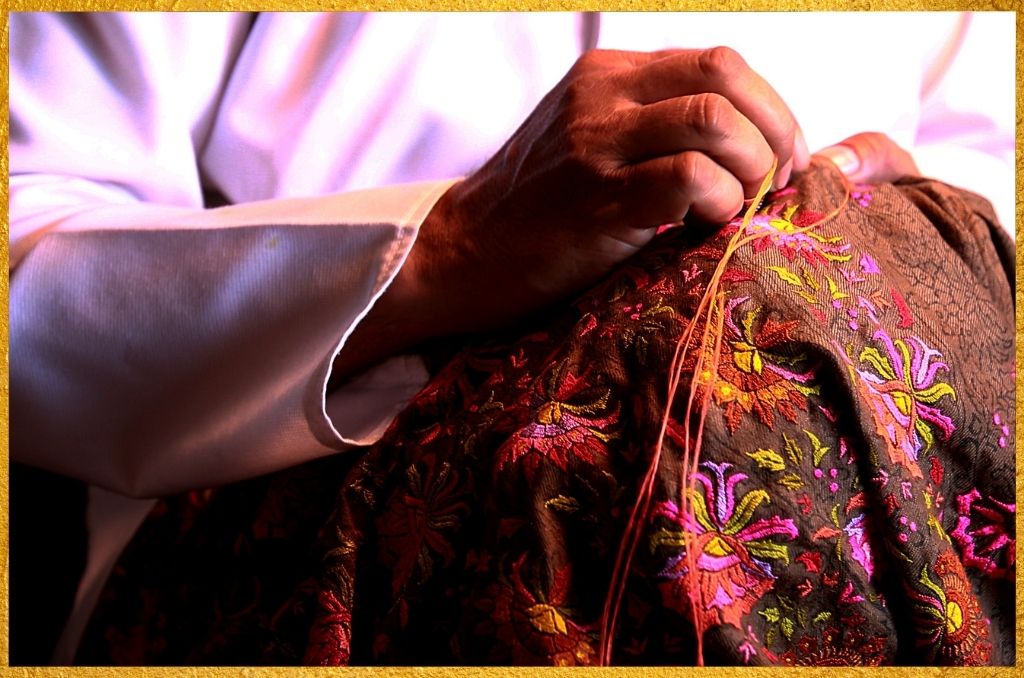
Pashmina is not merely a textile; it carries the weight of centuries of tradition, culture, and heritage:
- Royal Favour: Throughout history, Pashmina shawls have adorned the courts of emperors and nobility. Mughal emperors, particularly Akbar, would appreciate and promote the craft of Pashmina shawl production.
- Cultural Integration: Pashmina has become deeply integrated into the cultural tapestry of the Himalayan region. Here, locals consider it an emblem of luxury and elegance. Moreover, patrons use it in ceremonies, rituals, and rites of passage, symbolizing warmth, tradition, and respect.
- Economic Significance: Pashmina production has been a significant source of livelihood for communities in Pashmina-producing regions. The economic impact of this industry extends beyond households to entire communities, hence playing a vital role in the local economy.
- Empowerment of Women: In these regions, women have been the guardians of tradition, preserving the craftsmanship of Pashmina production. Hence, the significance of Pashmina goes beyond its beauty; it empowers women economically, giving them a sense of independence and self-sufficiency.
Also read: THE CULTURAL HERITAGE OF PASHMINA
Kashmir: The Heart of Pashmina
Nestled among the peaks of the Himalayas, Kashmir, often referred to as "Paradise on Earth," stands as the heart of the Pashmina world. The history, heritage, and traditional craftsmanship of Pashmina in this region have not only earned it a place of prestige but have also firmly established Kashmiri Pashmina as the epitome of luxury and elegance.
Historical Tapestry of Kashmiri Pashmina
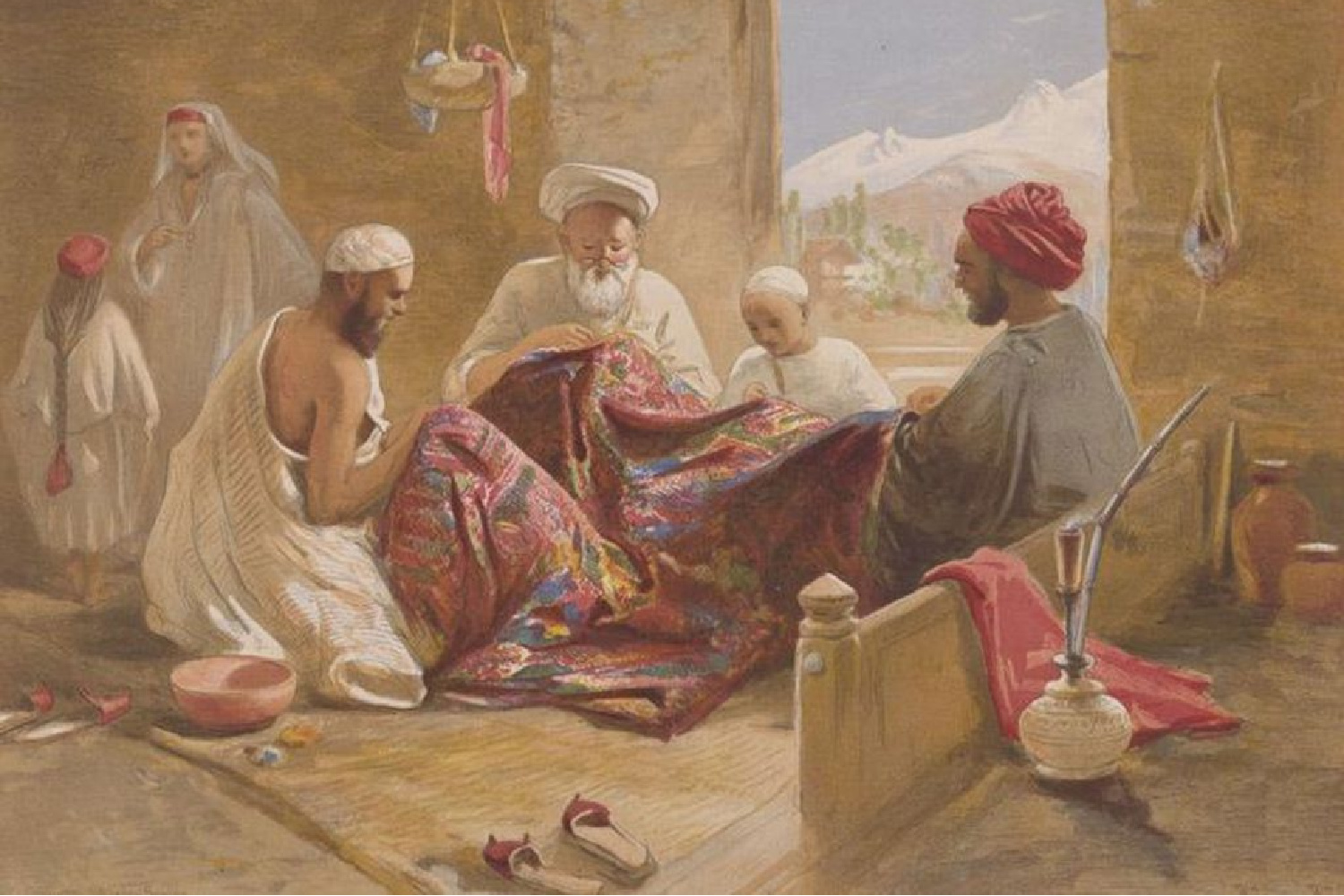
The story of Kashmiri Pashmina is a tapestry woven with threads of history and culture. Its origins go back over 500 years, to the time of the Mughal Empire. The Mughal emperors, known for their exquisite tastes, played a pivotal role in popularizing Pashmina shawls. It was during Akbar's reign that Pashmina truly gained royal favour. These shawls adorned the Mughal courts, gracing the shoulders of emperors and nobility. With their patronage, the craft indeed thrived the most in the region.
Traditional Craftsmanship
The traditional craftsmanship of Kashmiri Pashmina is unrivalled. But it is indeed the artistry of Kashmiri artisans that sets it apart as the best. Here's why:
- Finest Cashmere Wool: Kashmiri Pashmina begins with the finest Cashmere wool, sourced from the underbelly of Himalayan goats. The harsh climate and high altitudes in this region help produce wool of exceptional quality. These conditions, are unique to the Himalayan belt, resulting in wool with longer and finer fibres, thus making it far superior to cashmere found in other places.
- Skilled Artisans: Kashmiri artisans, particularly women, have honed their skills over generations. They are masters of the craft, and their intricate work is without a parallel. The art of manually converting the finest Cashmere wool into luxury shawls, scarves, and other products is an arduous and time-consuming process that requires tremendous skill, patience, and dedication. And indeed, Kashmiri women artisans specialize in the same.
- Handloom Weaving: The handloom weaving of Pashmina is a traditional art that has come down through the ages. This meticulous process allows for the creation of exquisite patterns and designs that reflect the cultural richness of the region. Each shawl is truly a work of art, and the craftsmanship is unparalleled.
- Hand-embroidery: Kashmiri artisans are famous for their exquisite hand-embroidery work, such as the intricate Sozni and Tilla techniques. These patterns are a blend of tradition and innovation, adding a touch of elegance and cultural significance to every piece.
Ladakh: High-Altitude Pashmina

In the pristine landscapes of Ladakh, nestled among the towering peaks of the Himalayas, a unique story of Pashmina unfolds. Ladakh, a region within the Indian state of Jammu and Kashmir, has carved a distinctive niche for itself in the world of Pashmina production. Furthermore, its high-altitude conditions and breathtaking beauty contribute to the exceptional quality of Ladakhi Pashmina, making it a cherished jewel in the realm of textiles.
Ladakh's Role as a Pashmina-Producing Region
Ladakh's role in Pashmina production is significant, and it stands as a key contributor to the exquisite world of fine wool textiles. The region's elevation, often exceeding 3,000 meters (10,000 feet) above sea level, creates an environment that is perfectly suited for the rearing of special Himalayan goats, locally known as "Changra." These goats produce some of the finest and softest wool known to the textile industry.
The rugged terrains of Ladakh, characterized by barren mountains and frigid winters, offer a stark contrast to the softness and warmth of Ladakhi Pashmina. In the midst of these harsh conditions, Changra goats adapt and thrive, their wool growing thicker and finer, hence giving rise to a raw material of remarkable quality.
High-Altitude Conditions and Their Impact on Cashmere Quality
The high-altitude conditions in Ladakh are a pivotal factor in shaping the exceptional quality of Ladakhi Cashmere:
- Finer and Longer Fibers: The low-oxygen, high-altitude environment prompts the Changra goats to develop exceptionally fine and long wool fibres. These qualities are what make Ladakhi Pashmina stand out. The fibres are delicate, lightweight, and astonishingly soft, thus creating textiles that offer a luxurious and elegant drape.
- Natural Insulation: The extremely cold winters in Ladakh lead to the production of wool that is perfect for insulation. Ladakhi Cashmere is celebrated for its ability to provide warmth without the bulk typically associated with other fabrics. Hence, this makes it a coveted choice in cold Himalayan regions and beyond.
- Strength and Durability: Despite their softness, the wool fibres from Ladakh are remarkably strong and durable. This resilience ensures that products made from Ladakhi Cashmere maintain their quality and longevity.
- Velvety Texture: The unique climatic conditions lend Ladakhi Cashmere its velvety texture, which is incredibly comfortable against the skin. So, it's this distinctive softness that makes Ladakhi Cashmere the epitome of luxury.
Ladakhi Pashmina: A Rare and Precious Gem
Ladakhi Cashmere, with its unrivalled quality and unique characteristics, is a rare and precious gem in the world of textiles. It embodies the remarkable synergy between nature and craftsmanship, where the high-altitude conditions of Ladakh create the raw materials and skilled artisans transform them into exquisite shawls, scarves, and stoles.
The Superlative Quality of Ladakhi Cashmere
While Kashmiri Pashmina is famous for its exceptional quality, the region of Ladakh, located in the Indian state of Jammu and Kashmir, is popular for producing some of the best Cashmere wool in the world. In fact, Kashmiri Pashmina is of a superlative degree because it uses only 100% Pure Ladakhi Cashmere. Ladakhi Cashmere is distinguishable by its superlative attributes:
- High-Altitude Origins: The harsh conditions and high altitudes of Ladakh result in cashmere wool with even finer and longer fibres. This makes Ladakhi Cashmere particularly prized for its softness and warmth.
- Exceptional Softness: Ladakhi Cashmere is world famous for its extraordinary softness, often surpassing the softness of cashmere from other regions. It has a velvety texture that is incredibly comfortable against the skin.
- Natural Insulation: The properties of Ladakhi Cashmere make it an exceptional insulator, providing warmth without bulk. This is particularly important in the cold Himalayan climate.
- Resilience and Durability: Ladakhi Cashmere has immense strength and resilience, which ensures that products made from it are long-lasting and of high quality.
In the hands of skilled Kashmiri artisans, this Ladakhi Cashmere is transformed into the finest products, known for their exceptional softness, elegance, and warmth.
Other Cashmere Producing Regions
Nepal's journey to becoming a significant Pashmina hub is a story of perseverance and adaptation. The region boasts its own native breed of high-altitude goats, known as "Chyangra," which produce wool of exceptional quality. Certainly, over the years, Nepal has harnessed this natural resource, transforming it into fine pashmina products.
Nepal
The emergence of Nepal as a Pashmina-producing region can be attributed to several factors. Nepal has an abundance of skilled artisans who have honed their craftsmanship over generations. Additionally, Nepalese artisans have embraced contemporary innovations, including modern dyeing and weaving techniques. This blend of tradition and innovation allows Nepal to offer a diverse range of Pashmina products that appeal to a global market. Also, Nepal has established quality control standards to ensure that its pashmina products meet international quality requirements. These factors have helped Nepal to become one of the largest producers of Cashmere, and hence produce Pashmina shawls.
Tibet
Tibet, too, is not only geographically located in the heart of the Himalayas but also plays a central role in the production. Tibet's artisans are skilled in the intricate processes of hand-spinning, weaving, and embroidery. The region's role in the Pashmina industry lies not only in providing high-quality raw materials but also in preserving traditional techniques that transform this wool into the soft gold that Pashmina is known for.
Himachal Pradesh, Uttrakhand
Similarly, a few regions in North India produce their own versions of Cashmere. Nestled in the northern reaches of India, Himachal Pradesh boasts a thriving Pashmina industry. The region is home to the "Changi" or "Pashmina goat," whose fine wool forms the basis for exquisite products. Himachali Pashmina is famous for its softness and warmth. Hence people highly regard it for its quality. Adjacent to Himachal Pradesh, Uttarakhand is another significant Pashmina-producing region. Here, the art of Pashmina production has deep roots in the culture of local communities. The region's artisans use their skills to create traditional and contemporary designs.
Pashmina Production Process
The process of creating Pashmina is a labor-intensive and delicate art, passed down through generations. While Pashmina is produced in various regions, the skill and expertise of Kashmiri artisans are widely acclaimed for their mastery of this craft. So, let's take a journey through the intricate steps of Pashmina production, from wool collection to the final finishing, highlighting the unique techniques employed in different regions and the exceptional skill of Kashmiri artisans.
Step 1: Wool Collection

The journey begins with the collection of raw material – the exceptionally fine underbelly Cashmere wool of the Capra hircus goat. In regions like Ladakh, Tibet, and parts of northern India, such as Himachal Pradesh and Uttarakhand, herders especially rear these goats in the high-altitude terrains. They carefully comb the wool and collect it during the shedding season, typically in spring. Kashmiri artisans also source their wool from Ladakh only
Step 2: Cleaning and Sorting
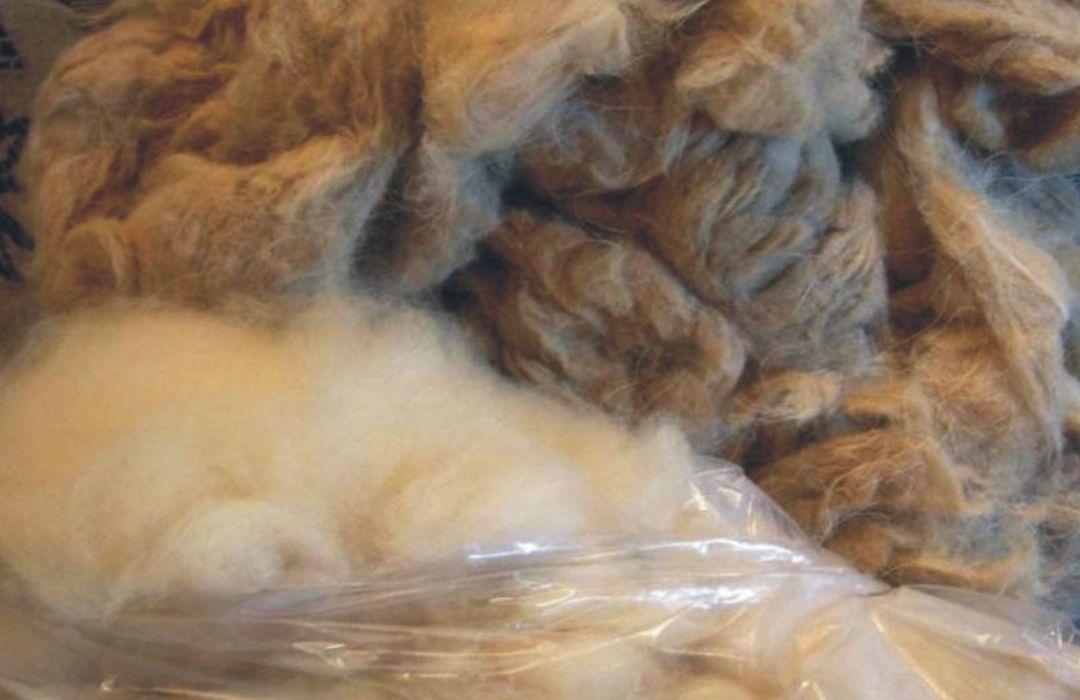
The collected wool is first cleaned to remove impurities. Women artisans play a significant role in this step, as they meticulously sort and clean the raw fibres. The process is time-consuming, as it involves combing and separating the finest fibres from coarser ones. Kashmiri artisans, with their skill and patience, are famous for their excellence in this delicate task.
Step 3: Hand-Spinning
The sorted wool is then skillfully hand-spun by artisans, mainly women. This is a challenging task due to the fineness of Cashmere fibres. Artisans spin the fibres into yarns, and the thickness of the yarn can vary based on the intended product. Spinners use traditional spinning wheels, known as "charkhas," for this purpose.
Step 4: Dyeing
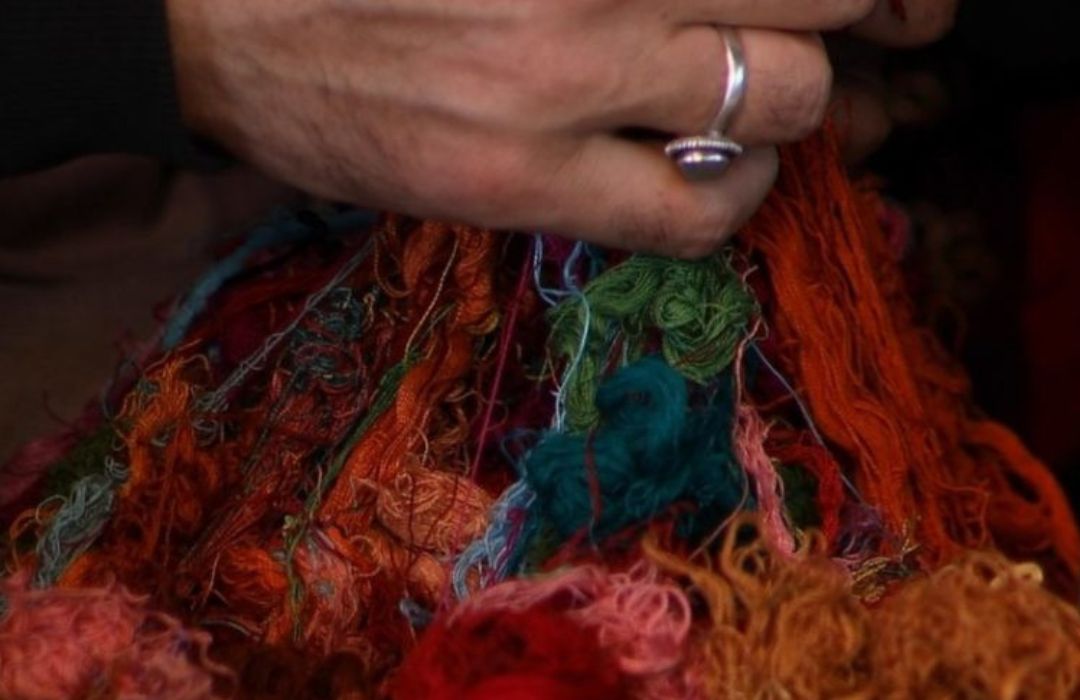
Dyeing is a critical step in the Pashmina production process. It requires a deep understanding of colour combinations and traditional techniques. Different regions have their own dyeing methods, with the use of natural dyes being a common practice. The choice of colours and dyeing patterns often reflects the cultural heritage and traditions of the region.
Step 5: Weaving
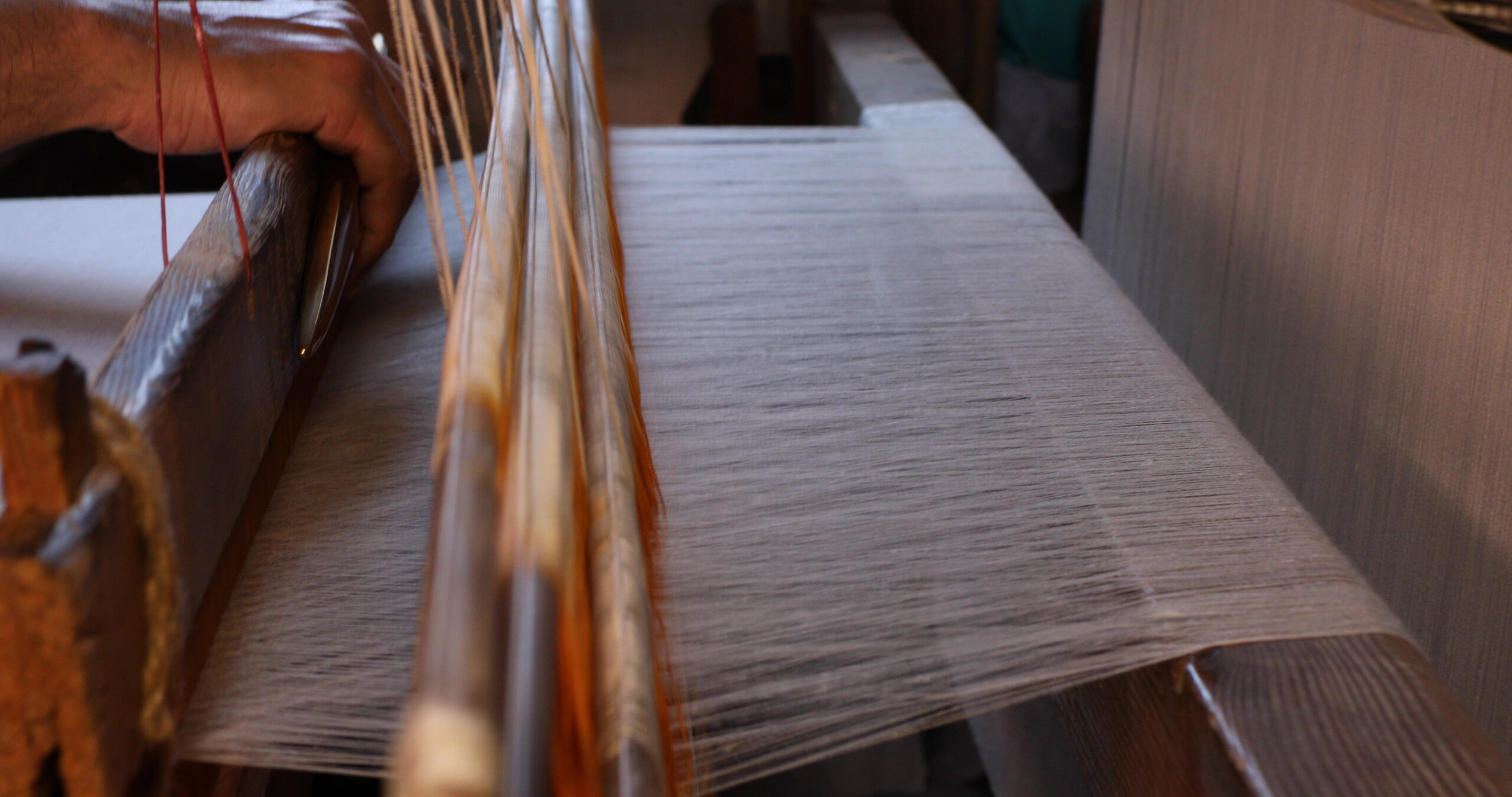
Weavers weave the hand-spun and dyed yarns carefully into intricate patterns and designs. Handloom weaving is the traditional method used to create shawls, scarves, and stoles of exceptional quality. The weaving process requires precision, as even the slightest error can affect the final product. The expertise of artisans is crucial at this stage.
Step 6: Hand-Embroidery
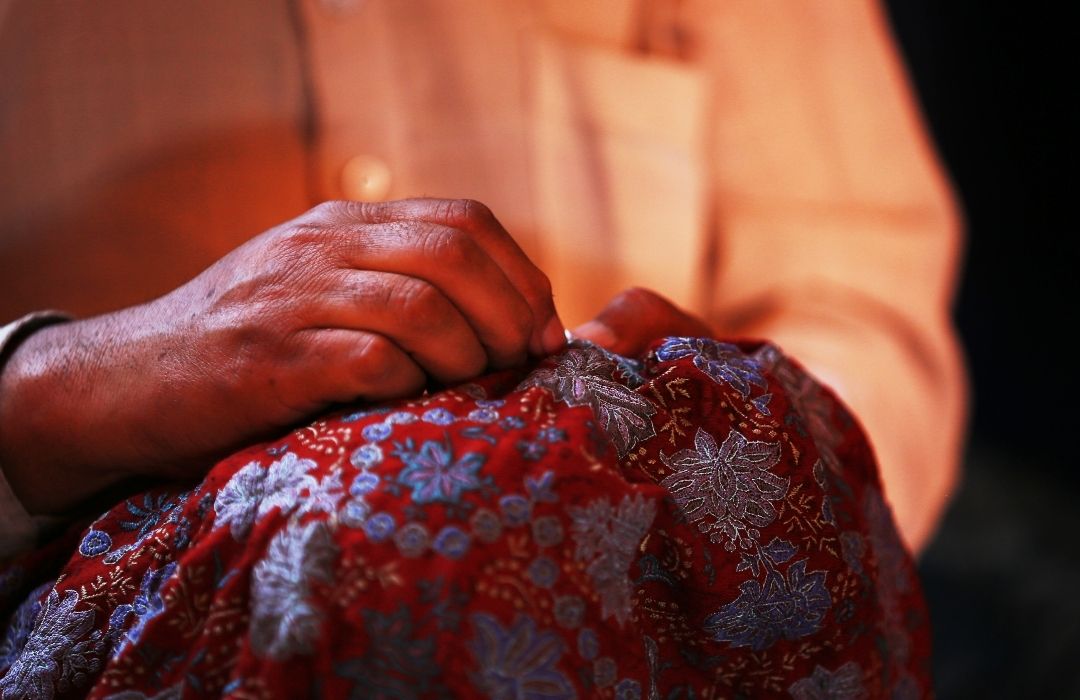
In regions like Kashmir and parts of India, hand embroidery is an integral part of Pashmina production. The artisans, often women, spend hours meticulously embroidering intricate patterns using techniques like Sozni, Tilla, and Papier Mache. These patterns add a touch of elegance and cultural significance to the products.
Step 7: Finishing
The final step in pashmina production involves finishing touches. The woven and embroidered pieces are carefully trimmed, and any loose threads are secured. Later professional washer-men wash the shawls and scarves to soften the fibers and enhance their sheen. This process is followed by blocking and ironing to ensure that the final product attains its desired shape and appearance.
Kashmiri Artisans: Masters of Pashmina Craftsmanship
Kashmiri artisans stand out in the world of Pashmina for their exceptional skill and expertise. The region's artisans are famous for their mastery of every step in the production process, from cleaning and sorting the raw wool to the delicate hand embroidery work. Kashmir's artisans have inherited their craft through generations. Hence, their dedication and precision are reflected in the exquisite products they create. While Pashmina is produced in various regions, the unmatched craftsmanship of Kashmiri artisans continues to set the standard for quality and elegance, making Kashmir the heart of Pashmina production.
Pashmina as a Cultural Symbol
In the regions we've visited on our journey through the world of Pashmina – Kashmir, Tibet, and Nepal – this luxurious fabric transcends its role as a mere art form. It is deeply woven into the cultural tapestry of these regions, with its threads symbolizing tradition, elegance, and warmth.
Kashmir: Where Tradition Meets Luxury
In Kashmir, Pashmina is more than just an exquisite art form; it's a living testament to tradition and opulence. Kashmiri artisans, often women, have inherited the art of Pashmina production through generations. Shawls and scarves produced in the region carry a rich cultural heritage that is often passed down as family heirlooms.
Pashmina plays a pivotal role in Kashmiri weddings and other significant ceremonies. It is a token of love and good fortune, with mothers gifting their own Pashmina shawls to their daughters when they get married. These shawls are not just symbols of luxury but also of familial bonds and cultural heritage. In everyday life, it provides warmth and comfort in the harsh Himalayan winters, becoming an integral part of the region's culture.
Tibet: Elegance in High Altitudes
In Tibet, Pashmina serves as a symbol of elegance and practicality. The region's cold and high-altitude climate makes Pashmina an essential part of daily life. Tibetans rely on Pashmina shawls and scarves to stay warm in the unforgiving weather. The intricate designs and patterns on these accessories often carry cultural significance. Artisans hence weave local culture into the fabric of Tibetan traditions.
Pashmina is also integrated into Tibetan ceremonies and rituals, where it signifies honour and respect. Ceremonial scarves, or "khatas," are made from Cashmere and are offered to elders and esteemed guests as a mark of respect. In a land where culture and spirituality are intertwined, Pashmina adds a layer of significance to every occasion.
Nepal: A Melting Pot of Culture and Craft
Nepal, a land of diverse cultures and traditions, has embraced with a unique blend of artistry and contemporary design. Pashmina products, created with a fusion of tradition and innovation, are not just textiles; they are a reflection of Nepal's diverse cultural heritage.
In Nepal, Pashmina is integrated into various cultural traditions, adding elegance to rituals, ceremonies, and rites of passage. Locals appreciate its warmth and softness in the region's cold winters, and its versatility makes it a beloved part of daily life.
Also read: PASHMINA - AN EXPLORATION OF HERITAGE
Conclusion
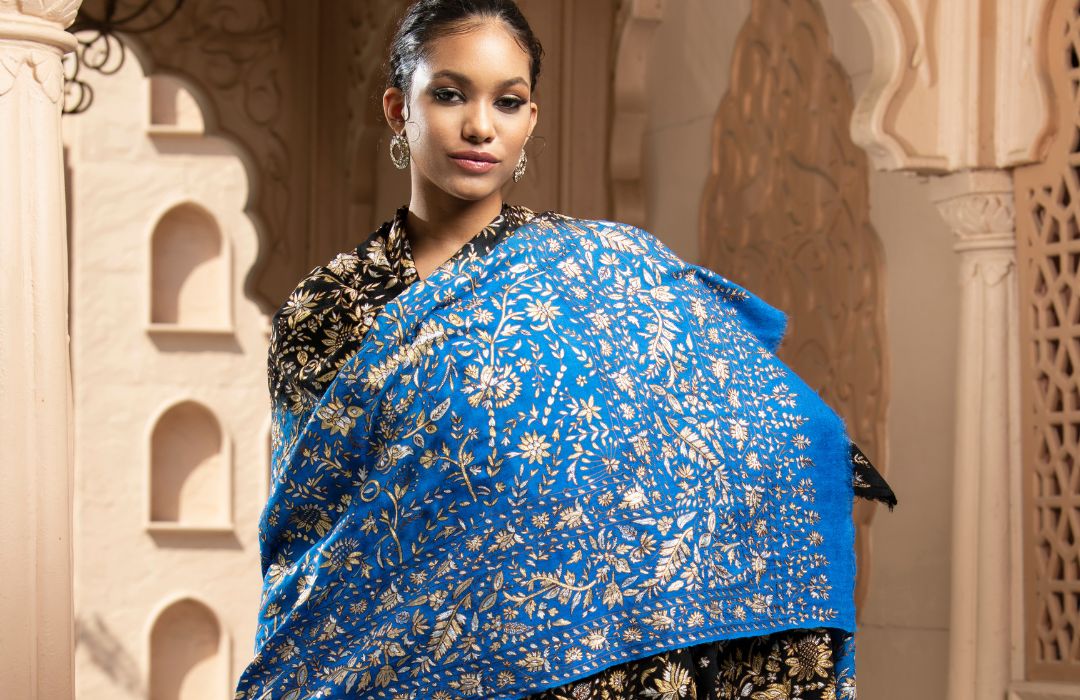
The story of Pashmina is one that spans across the Himalayan regions. From the high-altitude terrains of Tibet to the diverse cultures of Nepal, people have embraced the soft warmth of Pashmina and cherished it for centuries. It's a testament to the enduring relevance of this fabric that transcends geography. Yet, amidst this rich tapestry of Pashmina traditions, Kashmiri Pashmina shines the brightest. The artisans of Kashmir, known for their exceptional skill and unwavering dedication, have created a legacy of craftsmanship that remains unparalleled. The delicate art of hand-spinning, the intricate hand embroidery, and the deep-rooted cultural significance woven into every Kashmiri Pashmina product set it apart as the epitome of luxury and elegance.
In the world of art, Pashmina is a treasure, and Kashmiri Pashmina is the crown jewel. Its threads are a testament to human artistry and tradition, where artists weave unmatched beauty and strength into every shawl, scarf, and stole. Kashmir's artisans have not just mastered the craft; they have elevated it to a level of perfection that stands unmatched in the world. So, as we conclude our journey, let us continue to celebrate the soft gold of the Himalayas and the artisans of Kashmir, who continue to weave their magic, one thread at a time, ensuring that the elegance of Pashmina remains unrivalled.
Also read: A WALK THROUGH THE MEADOWS OF KANI PASHMINA